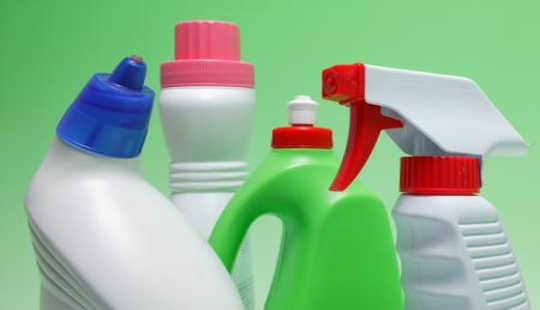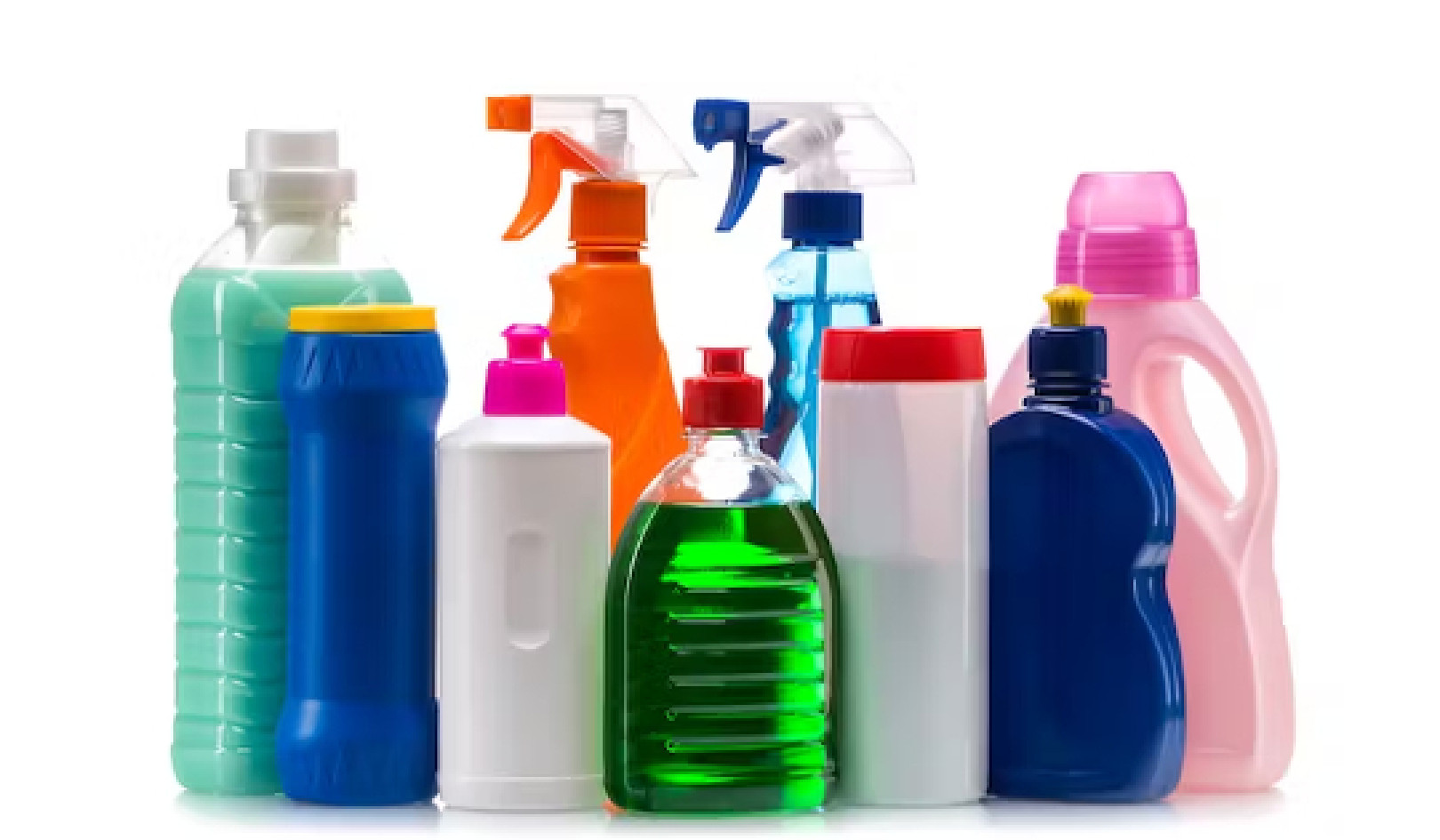
Almost every product we purchase, use in our homes or give to our children contains tens, if not hundreds, of chemicals. The United States chemical industry alone produced US$769.4 billion worth of chemicals in 2012. The electronics that light up our smartphones and make today’s cars safe contain metals, plastics, ceramics and a host of other materials. Even plastic packaging is a complex mixture of molecules, and each one plays a role: they provide the strength, color, texture, elasticity and durability we associate with performance.
Few people would say it’s worth the risk of a hazardous chemical exposure to check football scores or calm a fussy toddler. And consumers in North America and Europe are starting to expect that regulation will protect us from harmful chemicals in the products we buy. Unfortunately hazardous chemicals are still all around us – every time a child picks up a plastic toy, she may be exposed to myriad hormone disruptors, neurotoxins, dermal sensitizers, asthmagens or carcinogens.
Regulators are starting to take steps toward protecting end users from these risks. Consumer awareness and community activism exert pressure on manufacturers, and early-stage legislation is testing the waters of government involvement in the United States.
But when considering the dangers of hazardous chemicals in our products, manufacturers often underestimate risk by evaluating only the best-case scenario and considering only consumers. How these products are made by real workers in unregulated environments offers a stark contrast.
As a chemist pursuing green chemistry – developing chemical processes and products that are inherently safer for humans and the environment – I have seen this problem firsthand. We imagine production lines using top-of-the-line safety equipment, full containment of hazards and well-trained workers, but this is rarely the reality in our global economy. We need to design products that are inherently safer not just for consumers, but for workers in un- or underregulated environments.
Acute Versus Chronic Dangers
Our widespread lack of awareness of the risks workers face along the production pipeline hit home for me on a recent visit to India. I was part of a team developing greener building materials for low-income housing. It became obvious that we can’t assume recommended safeguards will be universally adopted when chemicals are part of the manufacturing process in underregulated workplaces.
Safety goggles, gloves and even shoes are beyond the means of workers in factories like the one where I worked in Ahmedabad, and are rarely mandated or provided by employers. People are working without the simplest protection, at times with chemicals that we know have affiliated health risks.
No one I worked with was overtly disturbed by this lack of protection that delivered to their lungs and skin a daily cocktail of chemical additives. Even in a company producing “greener” building materials made primarily from recycled cardboard, our workers were exposed to hazardous airborne dust and gases, and handled ingredients whose chemical composition was a mystery to everyone on the factory floor.
In my experience, safety has a different meaning to the average Indian laborer than it does to a North American chemist. For them, the acute hazards of even getting to work overshadowed the chronic dangers they were exposed to once they arrived. India has one of the highest rates of deaths from traffic accidents in the world, with over 200,000 per year. Another 48,000 Indians die annually from accidents in their workplaces, and countless undocumented injuries destroy people’s lives and livelihoods.
Furthermore, there are few protections for Indian laborers who become unable to work. Concerns about job security for the working poor overshadow questions of job safety, particularly in the face of invisible, chronic hazards. It’s not that workers are cavalier about their health; they just often don’t have better options or the power to demand improved conditions.
Workers Largely Lack Protections Consumers Are Starting To Demand
In North America, we are gradually becoming aware of the risks to consumers of hazardous materials that are ubiquitous in our homes and workplaces. We know about hormone-disrupting flame retardants in furniture and baby clothing, asthma-inducing diisocyanates in spray foam polyurethane insulation, neurotoxic formaldehydes in particleboard resins and a host of others.
The growing body of evidence has mobilized scientists, advocacy groups, public health experts and legislators and has led to such groundbreaking laws as the California Department of Toxic Substance Control’s (DTSC) Safer Consumer Product (SCP) regulations. Little federal regulation exists, but the United States Environmental Protection Agency (EPA) is also taking action by acting as an information clearinghouse. At the same time, reforms of the Toxic Substances Control Act currently under review could bring more authority to EPA.
{youtube}Su-7SiFn618{/youtube}
It is important that movement toward controlling chemicals in the United States considers those most affected by chronic chemical exposure: not only consumers, but also workers.
Since their passage in 2013, the DTSC SCP regulations have taken a clear stance on the importance of worker safety in California; one of the first three chemical-product combinations regulated was diisocyanates in spray-foam insulation. Studies have shown that workers who install this insulation and therefore experience chronic exposure to diisocyanates have an increased incidence of allergic sensitization and asthma. There are some risks to building occupants associated with ongoing release of diisocyanates from improperly cured insulation. But in this case, the SCP regulations successfully pinpoint the most at-risk group for exposure to this hazardous chemical, and require suppliers to consider how worker safety is affected by proposed alternatives.
Imports Allow Us To Export Work With Chemicals
The environment in which diisocyanates and their safer alternatives are used can be controlled in California by active regulation and enforcement. Many of the other chemicals and products of concern identified by the DTSC are manufactured in parts of the world with considerably less safety oversight.
For instance, the US imports about 14 times more clothing, mostly from China and Vietnam, than it exports (by dollar value). Clothing production can include dangerous chemicals, such as formaldehyde additives to create “wrinkle-free” products. By the time a wrinkle-free shirt gets to the store, the levels of formaldehyde it off-gases are likely too small to be dangerous for most customers. But when the finish is applied, workers are exposed to the chemical at significant doses.
Grassroots activism typically focuses on issues close to home such as what babies ingest when they drink from plastic bottles, whether certain soaps produce a skin rash in sensitive children, and what nanoparticle antimicrobials in clothing might do to fish in the local watershed. These are critically important issues, and local concerns are often what lead to the creation of legislation such as the Safer Consumer Product Regulations.
But American consumers are not the only ones who need protection. With implementation of the SCP regulations, the California Department of Toxic Substance Control is poised to be a national and international leader in defining what it means for a product to be “safer.” Safety for all people – workers and consumers – and ecosystems as they actually interact with the chemistry at all stages of the product life cycle should be a priority. The gold standard for safe material formulations should be that they can be manufactured without chronic health impacts on workers, even in unregulated environments.
Toward A Truly Green Chemistry
During my last days in Ahmedabad, as I was preparing samples to ship back to North America, I felt something soft hit me on the shoulder. In the 110 degree Fahrenheit heat, I was startled to turn around and see one of my coworkers playfully dodging a hail of snowballs. I quickly spotted the source of this mysterious “snow” – we were testing sodium polyacrylate as a processing agent, and a scoopful had fallen into a washbasin. The benign desiccant had quickly swelled to 300 times its original volume. Umya, my assailant, had been the first to recognize its mischievous potential.
As “snowballs” flew through the air, I realized that this was the embodiment of safer chemistry – materials so safe that we could play with them, never worrying that they covered our hair, our hands and faces. No protection necessary.
About The Author
Heather Buckley, Associate Director of International Partnerships, Berkeley Center for Green Chemistry, University of California, Berkeley. Her current work focuses on the development of waterproofing additives for high quality shelter in the developing world.
This article was originally published on The Conversation. Read the original article.
Related Books
at InnerSelf Market and Amazon

























